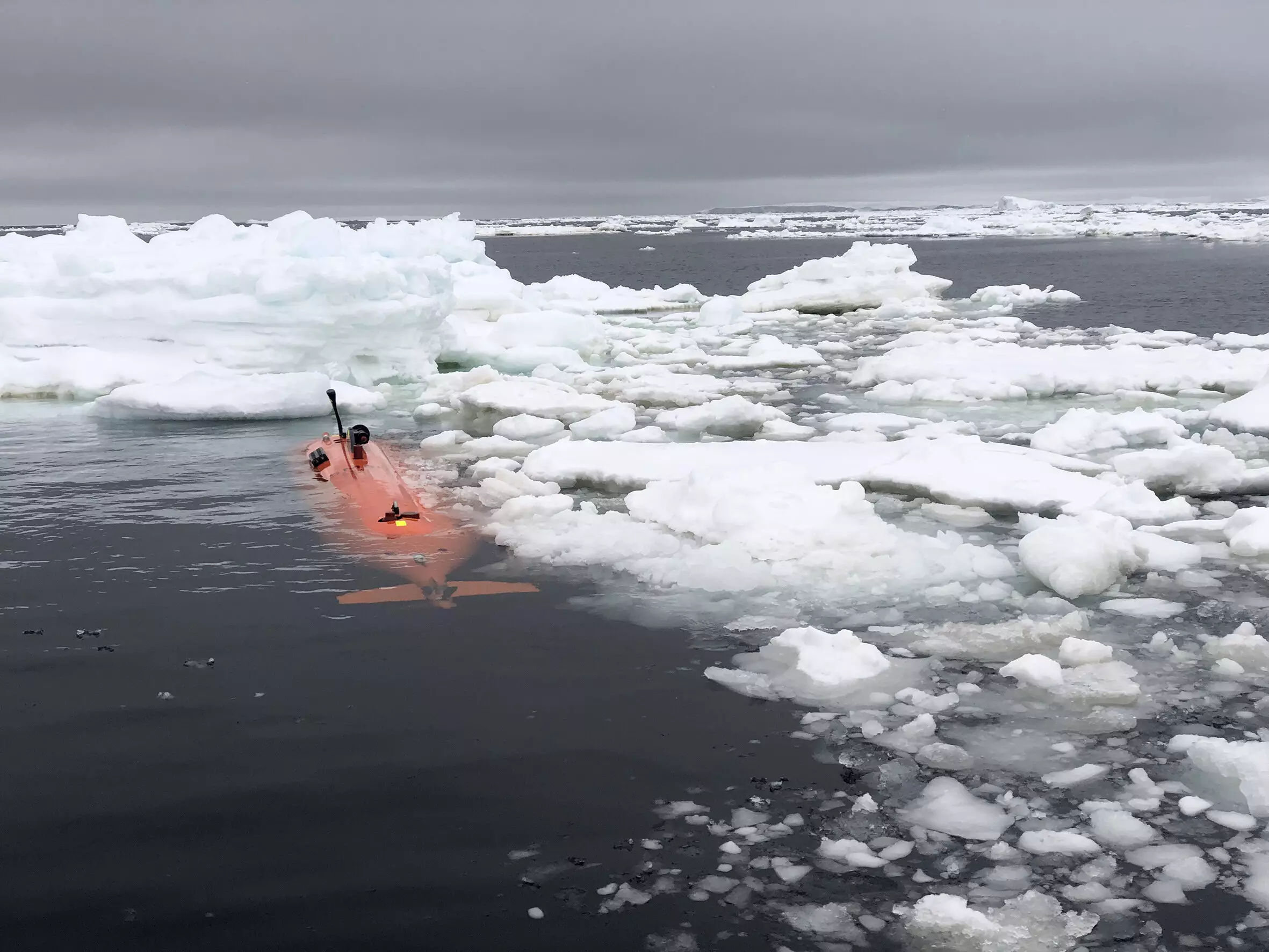In a remarkable leap forward for climate science, an international research team has conducted an unprecedented exploration beneath the Dotson Ice Shelf in West Antarctica using an autonomous underwater vehicle named “Ran.” This initiative, part of the broader International Thwaites Glacier Collaboration, is a profound attempt to decode the intricacies of glacier dynamics and their implications for global sea levels. The operation’s significance is underscored by the alarming realities of climate change, as melting ice sheets hold a key to understanding future environmental shifts.
The Dotson Ice Shelf, a majestic formation of glacial ice borne from the continental ice sheets nearby, sits in a precarious position that could contribute substantially to rising sea levels if it collapses. The ambitions of the research team were not merely to observe but to map the ice’s underside thoroughly—an area that remained a mystery until now. Over the span of 27 days, the intrepid vessel traversed with pinpoint accuracy, covering an astonishing 1,000 kilometers beneath the shelf. This exploration not only revealed undercurrents shaping the glacial environment but also birthed a wealth of new data that could reshape our understanding of ice shelf dynamics.
Mapping Ice: An Artistic Perspective
One of the most striking findings from this pioneering expedition was the unexpected topographical features at the glacier’s base. The sonar imagery captured by Ran unveiled an intricate montage of peaks and valleys, and formations that resembled sand dunes, which challenge previous assumptions about the uniformity of ice shelf undersides. According to lead researcher Anna Wåhlin from the University of Gothenburg, seeing these details was akin to “seeing the back of the moon for the first time.” The artistic impressions of patterns, swirls, and fractures led researchers into a brainstorming frenzy, igniting a detective-like curiosity to understand the forces creating them.
The evidence emerged that significant melting occurred where strong ocean currents interacted with the glacier’s structure, indicating the complexity of underwater processes that drive these changes. It seems that the behavior of ice shelves is not only dictated by the climate but also by intricate interactions between glacial features and ocean dynamics. This revelation opens up a paradigm shift in ice research, where the artistically chaotic landscape of the ice’s base leads to a deeper understanding of how melting is influenced.
Connecting the Dots: Collaborations in Science
The collaborative nature of this exploration emphasizes the critical synergy between oceanographers and glaciologists. The TARSAN project has brought together a wealth of expertise, enabling the team to analyze and discuss findings in ways that would have previously been impossible. As important as the data collected were the discussions that arose from analyzing those results. The startling images sent back from the submersible prompted not only joy but also a call to re-evaluate existing hypotheses about glacial melting.
This project highlights how interdisciplinary approaches are not just beneficial but essential for tackling complex scientific questions. The challenges posed by climate change require a radical shift in how we conduct research—blending different scientific perspectives can lead to significant breakthroughs, enriching the overall understanding of the system dynamics at play. The uncertain landscape of melting ice is a multidimensional puzzle, and researchers are just beginning to grasp the full scope of the forces in action.
The Challenges Ahead
Despite the excitement generated by the findings, the research team encountered significant obstacles, especially during subsequent missions to revisit the Dotson Ice Shelf for further data collection. The loss of communication with Ran during a dive in early 2024 serves as a stark reminder of the unpredictable nature of working in such extreme environments. Yet, even in challenges, there lies an opportunity for growth and learning. The intermittent successes illustrated by the data collected thus far will lay the groundwork for future explorations.
The melting of ice shelves like Dotson is not merely a scientific curiosity; it is a pressing global concern with the potential to impact millions. As current models consistently fall short of predicting the complexities of glacial melting, it becomes clear that the methodologies employed during this exploration can pave the way for refined models that reflect the realities of climate change-driven dynamics.
The blend of creativity, critical inquiry, and technological innovation exemplified by this project not only enhances our knowledge of Antarctic ice shelves but also promises to inform future climate models, ultimately contributing to global efforts to combat rising seas and the implications of climate change. This research is a testament to what can be achieved when ambition fuels scientific exploration.

